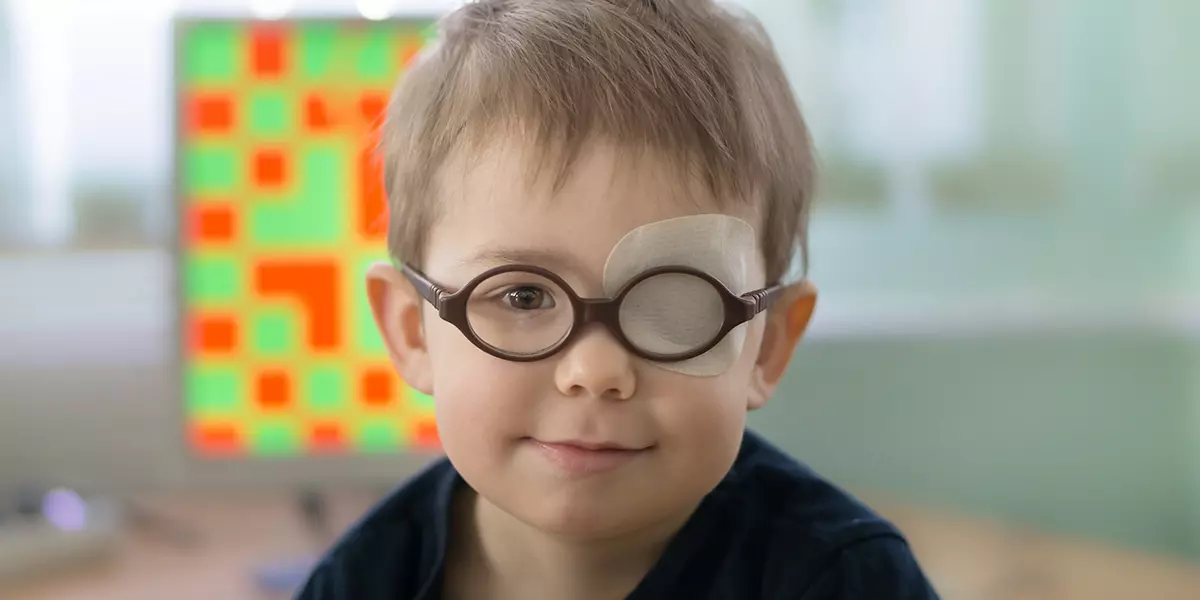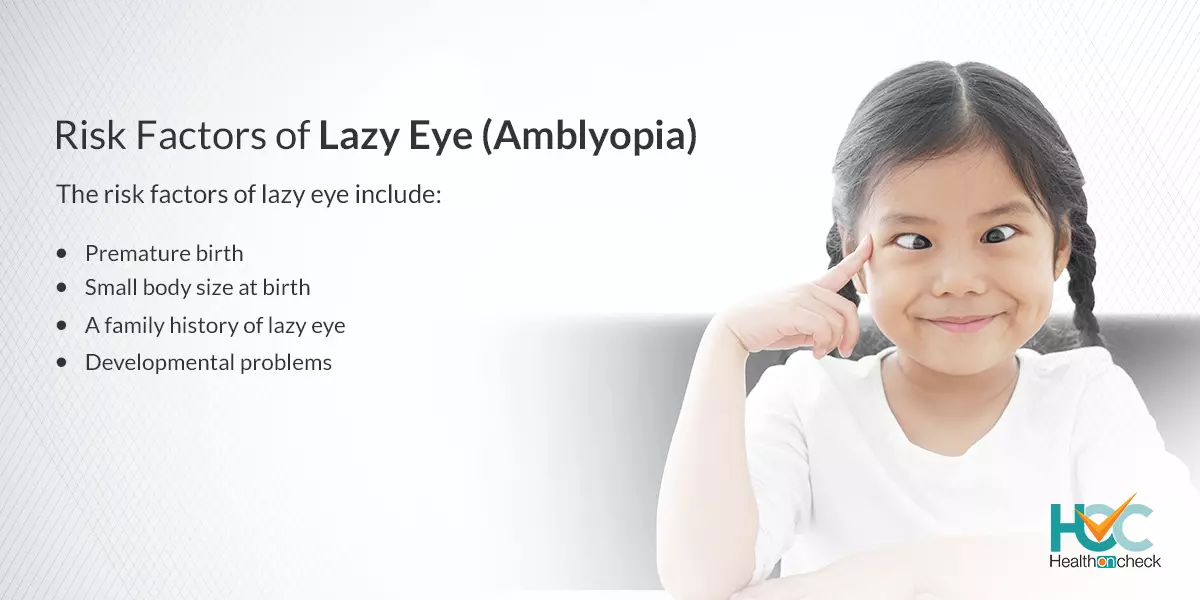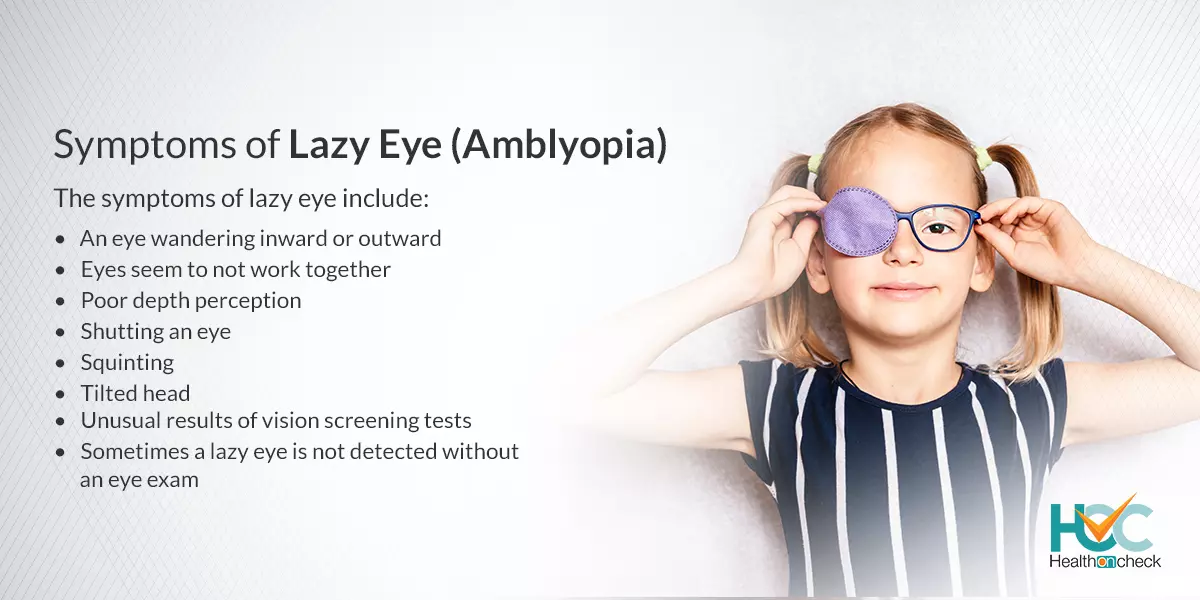All about Lazy Eye

What is Lazy Eye (Amblyopia)?
Lazy Eye (Amblyopia) is an eye condition affecting the ability of both eyes to see clearly. It generally occurs when a child is a newborn or very young and can worsen over a period if it’s left untreated. If a child has lazy eyes, one of their eyes has blurry vision while the other has clear vision. Their brain begins ignoring their blurry eye and only uses the eye with a clear vision to see things. As their brain starts relying more on their stronger eye, their weaker eye’s vision worsens over time. Lazy eye is a serious medical problem that requires treatment from an eye doctor.
What are the Types of Lazy Eye (Amblyopia)?
The types of lazy eye include:
Refractive: It causes huge differences in vision between both eyes.
Strabismic: It leads to constant eye turn in one eye.
Deprivation: It decreases vision in one eye due to physical problems in the eye, including a cataract.
What are the Symptoms of Lazy Eye (Amblyopia)?
The symptoms of lazy eye include:
- An eye wandering inward or outward
- Eyes seem to not work together
- Poor depth perception
- Shutting an eye
- Squinting
- Tilted head
- Unusual results of vision screening tests
- Sometimes a lazy eye is not detected without an eye exam.
What are the Causes of Lazy Eye (Amblyopia)?
Abnormal visual experience early in life that alters the nerve pathways between a thin layer of tissue (retina) at the back of the eye and the brain causes lazy eye. The weaker eye gets fewer visual signals. Ultimately, the ability of the eyes to work together reduces, and the brain suppresses or ignores input from the eye that is weaker.
Anything blurring a child’s vision or leading to the eyes to cross or turn out can cause a lazy eye. Some common causes of lazy eye include:
Muscle imbalance (strabismus amblyopia): An imbalance in the muscles that position the eyes is the most common cause of lazy eye. This imbalance can result in the eyes crossing in or turning out and stops them from working together.
Variation in sharpness of vision between the eyes (refractive amblyopia): A variation between the prescriptions in each eye is usually because of farsightedness but sometimes nearsightedness or an uneven surface curve of the eye might cause lazy eye.
Glasses or contact lenses are normally used to rectify these refractive problems. In some children, lazy eye occurs because of a combination of strabismus and refractive problems.
Deprivation: A problem with one eye including a cloudy area in the lens (cataract) can prevent clear vision in that eye. Deprivation amblyopia in infancy needs urgent medical treatment to avert permanent vision loss. It’s usually the most severe type of lazy eye.

What are the Risk Factors of Lazy Eye (Amblyopia)?
The risk factors of lazy eye include:
- Premature birth
- Small body size at birth
- A family history of lazy eye
- Developmental problems
What are the Complications of Lazy Eye (Amblyopia)?
If not treated then lazy eye can lead to permanent vision loss.
How Lazy Eye (Amblyopia) is Diagnosed?
To diagnose a lazy eye, your doctor will perform an eye exam, and check for eye health, a wandering eye, a difference in vision between the eyes, or poor vision in both eyes. Eyedrops are usually used to dilate the eyes which can result in blurred vision that lasts for several hours or a day.
The method used to test vision is based on your child’s age and stage of development:
Preverbal children: A lighted magnifying device is used to find cataracts. Other tests are helpful to examine an infant’s or toddler’s ability to treat his or her gaze and to follow a moving object.
Children age 3 and more: Tests using images or letters can check the child’s vision. One eye is covered while the other is checked.
What are the Treatment Options Available for Lazy Eye (Amblyopia)?
The treatment options for lazy eye include:
Corrective eyewear: Glasses or contact lenses can be given to rectify problems including nearsightedness, farsightedness, or astigmatism that causes lazy eye.
Eye patches: To activate the weaker eye, an eye patch is given to your child to wear over the eye with better vision for 3 to 6 or more hours a day. In some instances, wearing an eye patch too long can result in lazy eye spreading in the patched eye but it’s generally reversible.
Bangerter filter: A special filter is given that is placed on the eyeglass lens of the stronger eye. The filter blurs the stronger eye and, similar to an eye patch, it stimulates the weaker eye.
Eyedrops: An eyedrop known as atropine (Isopto Atropine) can be used to temporarily blur vision in the stronger eye. It is generally given for use on weekends or daily, use of the drops makes your child use the weaker eye more and provides an alternative to a patch. Side effects can be sensitivity to light and eye irritation.
Surgery: In some cases, surgery might be needed if he or she has droopy eyelids or cataracts causing deprivation amblyopia. If your child’s eyes still cross or wander apart even after wearing appropriate glasses, your doctor may suggest surgical repair to straighten the eyes, along with other lazy eye treatments.
Living with Lazy Eye (Amblyopia)
Lazy eye is a common problem affecting children’s vision. The best way to detect lazy eyes early is to go for frequent vision tests. Ask your doctor about checking your child’s eyes during all the check-ups and your doctor will recommend treatments to treat the lazy eye along with restoring as much of your child’s sight as possible.
Whom to Consult?
If you notice that your child’s eye is wandering after the first few weeks of life, then consult with your doctor who might refer you to an eye specialist who will diagnose if your child has a lazy eye or not. A vision check is quite vital to determine if there’s a family history of crossed eyes, childhood cataracts, or other eye problems.





